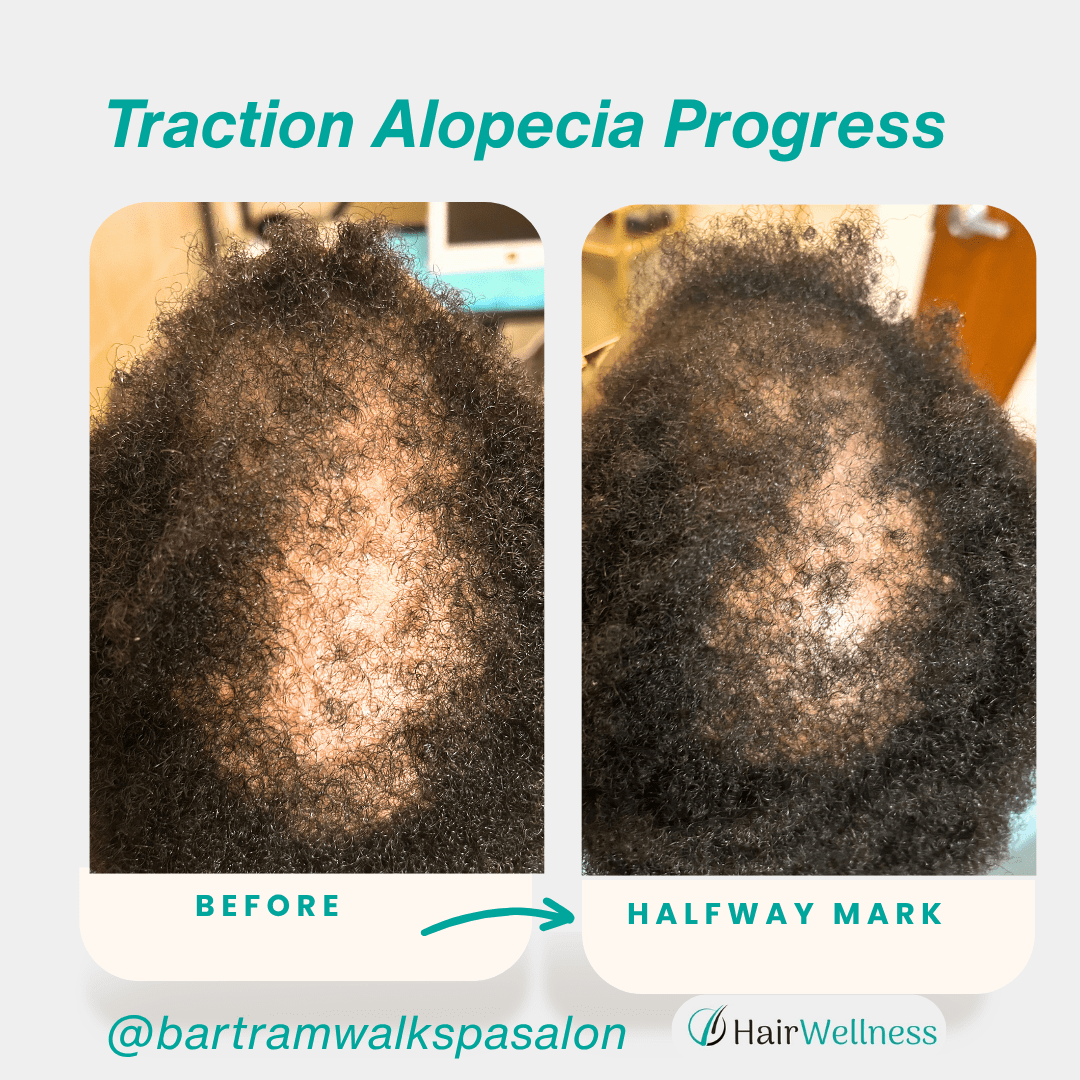
What Is Traction Alopecia?
Traction alopecia is a form of mechanical hair loss caused by prolonged tension on the hair follicles. Unlike most forms of alopecia, this condition is externally triggered, often by hairstyles that pull too tightly on the scalp over long periods.
Styles such as tight braids, ponytails, buns, extensions, wigs, and even head coverings can all contribute. Over time, chronic pulling leads to follicular inflammation, poor circulation, and eventual miniaturization or permanent damage, particularly around the hairline and temples.
Functional Medicine Perspective: More Than Just Tension
While the initial trigger is mechanical, the body’s internal resilience plays a role in whether follicles recover or deteriorate. In functional medicine, we look at the terrain the follicle is growing in. Recovery potential depends on several internal factors:
1. Chronic Inflammation
Mechanical stress activates local inflammation. If the body is already in a pro-inflammatory state due to poor nutrition, hormonal imbalances, or metabolic dysfunction, healing becomes more difficult.
2. Nutrient Depletion
Hair follicles require a steady supply of amino acids, collagen, zinc, iron, and B vitamins to rebuild after damage. Many clients with traction alopecia also show signs of depleted reserves in these areas.
3. Collagen Breakdown
Tension affects the dermal structure of the scalp. Without sufficient collagen and elastin integrity, the scalp becomes less resilient and more prone to injury.
4. Microcirculation Impairment
Tight hairstyles reduce blood flow to the follicle root. If systemic circulation is already compromised due to stress, poor diet, or sedentary lifestyle, the follicles become starved of oxygen and nutrients.
Internal Protocol: Rebuilding the Foundation
Supporting the internal environment is essential for reversing traction alopecia and preventing permanent follicular damage:
- Protein and Collagen Intake: Increase consumption of collagen-rich foods (bone broth, gelatin) and supplement with glycine, proline, and vitamin C.
- Zinc, Iron, and B-Vitamins: Replete deficiencies identified via blood analysis. These are critical cofactors in keratin synthesis and collagen remodeling.
- Reduce Systemic Inflammation: Focus on an anti-inflammatory diet, omega-3 supplementation, and lifestyle strategies to lower cortisol.
- Enhance Circulation: Daily movement, sauna therapy, and targeted nutrients (e.g., niacin) help improve blood flow to peripheral tissues, including the scalp.
Trichology Protocol: Tension Recovery and Follicular Reinforcement
Traction alopecia results from chronic tension, often combined with reduced circulation and inflammation around the follicle base. The priority in trichology is to alleviate mechanical stress, strengthen follicular anchoring, and restore scalp elasticity and resilience.
Our restorative protocol includes:
- Scalp cleansing gently applied in sections using a natural bristle brush to avoid further stress on weakened areas.
- Weekly ozone therapy for vasodilation and blood flow enhancement around previously restricted areas (temples, nape, front hairline).
- Cell Food Drops, gently tapped into areas of recession to promote cellular repair and dermal papilla nourishment.
- Essential oil blend featuring cedarwood, frankincense, rosemary, and carrot seed oil, which support collagen production, tissue repair, and immune modulation at the site of mechanical trauma.
- Manual lymphatic drainage techniques applied around the ears and base of the scalp to relieve fluid retention and stimulate local detox pathways.
- Protective styling education: Clients are advised to avoid all traction-based styles and given scalp-safe alternatives for protective wear, if needed.
Clinical Outcome: Time and Consistency Matter
Traction alopecia is reversible, if addressed early and consistently. Within 8–12 weeks, clients often report:
- Reduced tenderness and inflammation
- Fine regrowth along the temples and front hairline
- Less flaking and dryness
- Strengthened scalp resilience to styling
The earlier the intervention, the higher the chance of full recovery. Advanced scarring, however, may require additional regenerative modalities or Scalp Micropigmentation.
Closing Thought
Traction alopecia is one of the few types of hair loss that is largely preventable. But prevention starts with awareness, and recovery starts with a combined internal and external approach.
At Hair & Wellness by Bissan, we don’t just treat the symptom. We support your biology, strengthen your foundation, and give your scalp the tools it needs to heal, naturally, scientifically, and holistically.

